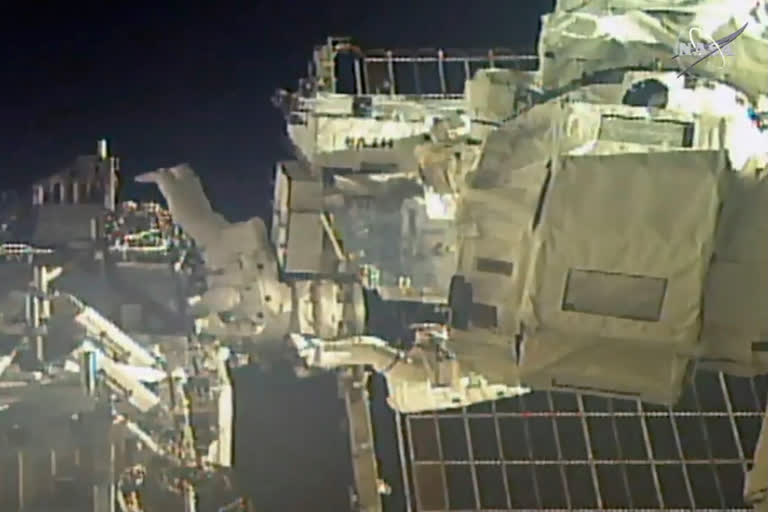Cape Canaveral: Astronauts completed their second spacewalk in under a week Wednesday to replace old batteries outside the International Space Station.
Commander Chris Cassidy and Bob Behnken quickly tackled the big, boxy batteries. For every two outdated batteries coming out, a new and improved one goes in to supply power to the space station on the night side of Earth.
Within a couple of hours, the astronauts had installed another new battery, the third one in this latest series of spacewalks that began last Friday. NASA plans to send the pair out twice more in July to finish the battery swap-outs that began in 2017. The new lithium-ion batteries should last the rest of the space station’s life, according to NASA.
With their main chore completed, Cassidy and Behnken jumped ahead to loosen the bolts on the batch of old batteries coming out next time and remove other equipment. Some of the bolts required extra muscle and another stubborn mechanism just wouldn’t come off.
“Boy, it put up a good fight,” Cassidy radioed. “These batteries, they like their home.”
The astronauts had enough time to route power and Ethernet cables outside the 260-mile-high (420-kilometer-high) outpost before the six-hour spacewalk drew to a close.
Read | Spacewalking astronaut loses mirror, newest space junk
Good thing there’s an Earth down there to tell up from down, Cassidy said.
NASA wants the battery work completed before Behnken returns to Earth in August aboard a SpaceX capsule. He's one of two test pilots who launched on SpaceX's first astronaut flight in May.
Cassidy and Behnken have now logged eight spacewalks — totaling nearly 50 hours — apiece.
A space tourist might get a chance to join the prestigious spacewalking ranks — for the right price.
Read | Sun-gazing Solar Orbiter makes first close approach
Virginia-based Space Adventures Inc. is seeking a paying customer to not only fly to the space station but do a spacewalk with an experienced Russian cosmonaut. Before launching from Kazakhstan, the space tourist would need to undergo extra training in Star City, Russia.
Space Adventures is not divulging the cost of the two-week mission. The flight would take up two tourists in 2023, one of whom would step outside. The Russian rocket company Energia has teamed up with Space Adventures for the expedition.
Plenty of specialized training would be needed before someone ventures out on a spacewalk, Behnken told earlier this week.
NASA considers spacewalks one of the riskiest parts of any mission, and astronauts spend hours practicing underwater — the closest simulation to spacewalking on Earth.
“I think it could be challenging for a tourist to go on a spacewalk,” Behnken said. Any tourist would want multiple practice sessions to be prepared for the space environment.
(AP)



